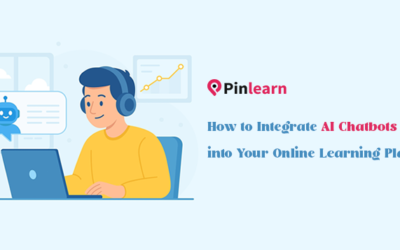How to Create a Website Like Udemy: Complete Guide 2025
Over the last decade, education has undergone a monumental shift from chalk-dusted blackboards to virtual whiteboards and online portals. Today, freedom and flexibility are equally important as the quality of education.
E-learning platforms like Udemy and Coursera are transforming the industry. These platforms are key catalysts for the $203.81 billion industry size.
But, there still exist gaps in the industry. Lack of practical experience, affordable certifications, or personalized learning, to name a few. If you’re an entrepreneur or SMB, you could build your e-learning business on these gaps.
Here’s a step-by-step guide on how to create a website like Udemy! So, get ready to build your future learning utopia!
How Does Udemy Work?
To reiterate Udemy’s success, you need to understand the nuts & bolts of the platform. So, let’s understand how Udemy works! As we know, Udemy is an e-learning marketplace with an extensive course library.
The idea is quite simple!
Instructors build and launch courses on Udemy.
While hosting a course is free, the platform cuts commission based on the source of the sale. The commission ranges from 3% – 63%. If instructors earn a purchase from instructor promotion, Udemy earns a 3% commission. Alternatively, for course sales directly from the platform it is around 63%.
Now, let’s move to the learner’s side of the story! Learners can search for a course topic like “programming.” Udemy’s autocomplete instantly suggests a list of popular courses.
Next, the learner enrolls with a specific course. Once the learner purchases the course, it takes you to the checkout page. Here, they need to complete the payment.
The final step is to complete the course and earn a certification.
Why Create a Website like Udemy?
-
Potential Market Demand & Authority
The online education industry revenue is expected to reach $203.81 billion by 2025. Shifting educational needs, technology, and flexibility are three key drivers. Hence, it’s the right moment to build a Udemy-like website.
-
Generate Revenue
You can easily monetize from your website once your website gains traction. Choose the right business model aligning with your goals. Subscriptions, certificates, and donations are a few rewarding strategies.
-
Make a Positive Impact
Whether you’re an entrepreneur or an educator, building an online learning platform like Udemy leaves a significant impact. For example, learners can connect with experts regardless of geographical barriers.
-
Cost-Effective
Starting an e-learning platform is more cost-effective than a physical setup. You save on expenses like rent, utilities, and other operational costs.
-
Scale Your Business
Nailed the initial platform milestones? Attracting more users and traffic and scaling your business is easy.
How to Create a Website Like Udemy: 7 Key Steps
Creating a website like Udemy needs clear planning and execution. Based on years of expertise, here’s a complete roadmap to make a website like Udemy.
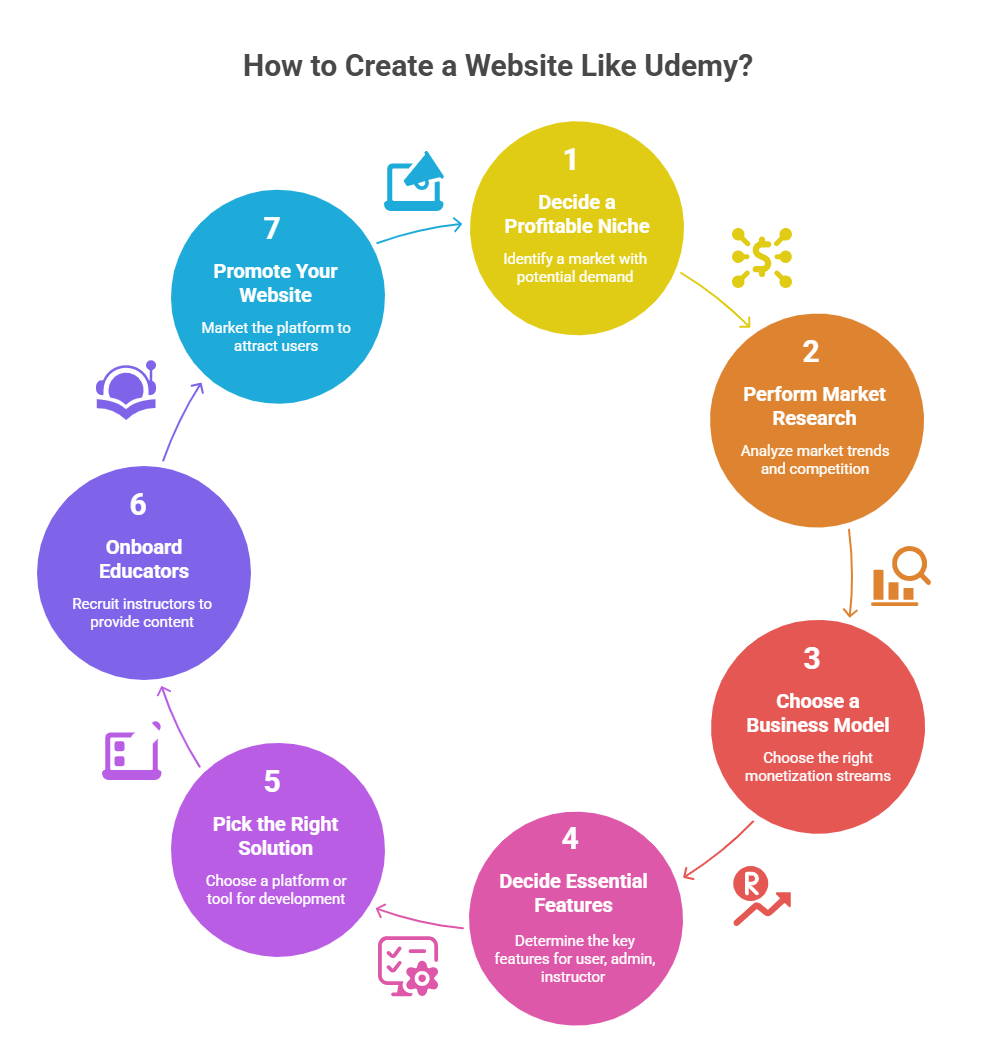
Step 1: Decide a Profitable Niche
First off, you need a unique niche to gain a business edge in the market. Think of this as a USP to attract learners.
When you create an “open course marketplace” like Udemy, you think about diverse courses to offer. Even if you gain some traffic initially, soon you will be lost in the sea.
So, the trick is to get super-specific!
Focus on a specific field, audience or industry.
Key strategies to find the right niche:
- Assess your strengths, passion, and expertise: Do you have years of expertise in tech or marketing? Are you passionate about learning languages? There, you have found your potential niche!
- Consider high-demand niches: You might have found a niche you’re good at or passionate about. But, assessing market size and its actual need is essential. Look into what people are searching online. For example, leverage Semrush, Google Trends, and Keyword Planner. Udemy’s search tool is also great to find what’s popular.

- Perform competitor analysis: Research the top e-learning websites attracting good traffic. Look into their features, courses, and target audience. See what’s working and not working!
- Fill an industry gap: Done with analyzing the market and competitors. You might have found potential shortfalls or gaps. For instance, lack of community support, certifications, or high prices.
✏️ Important Tip: Avoid going broad like “fitness” or “technology.” Narrow down your niche to a specific age, gender, or profession. For instance, “Fitness Workouts for New Moms” or “Personal Development for Aspiring Career Professionals.”
Step 2: Perform Market Research
Where does your niche fit into your target market? Is it aligned with the market trends & opportunities?
With market research, you gain deep insights to refine your offering. This helps to better craft business models and platform features.
Key considerations for market research:
Estimate the market size: Assess the current and future market size of the niche. That’s how you can future-proof your business!
Understand your target audience: Start with defining your core audience segments. Are they career professionals, students, or entrepreneurs? Create detailed personas with their needs, goals, pain points, learning behavior, etc. A quick survey, interview, or Reddit forums can help you with this.
Niche trends: E-learning is significantly influenced by technological innovations. For instance, add AI tools and micro-lessons or pivot towards career-oriented learning.
Lastly, assess the profitability of your niche before settling on one.
Step 3: Choose a Business Model
Next, is one of the most key steps on how to create a website like Udemy!
Yes, finding the right revenue-making tactics!
After all, you cannot run your course marketplace without money. Right?
Udemy operates on a marketplace model where it primarily earns from commissions. Besides, it also monetizes from subscriptions, ads, affiliates
A few profitable business models to build your Udemy-like website are:
Pay-per-course
Creators can create individual courses sharing their expertise. While they earn for their course sales, you, as a platform, can charge a fixed commission percentage.
Udemy does the same! The commissions range from 3% to 63% of the course price. For the course sales through instructor promotions, Udemy’s commission is 3%. When a student finds a course through Udemy, it’s around 63%.
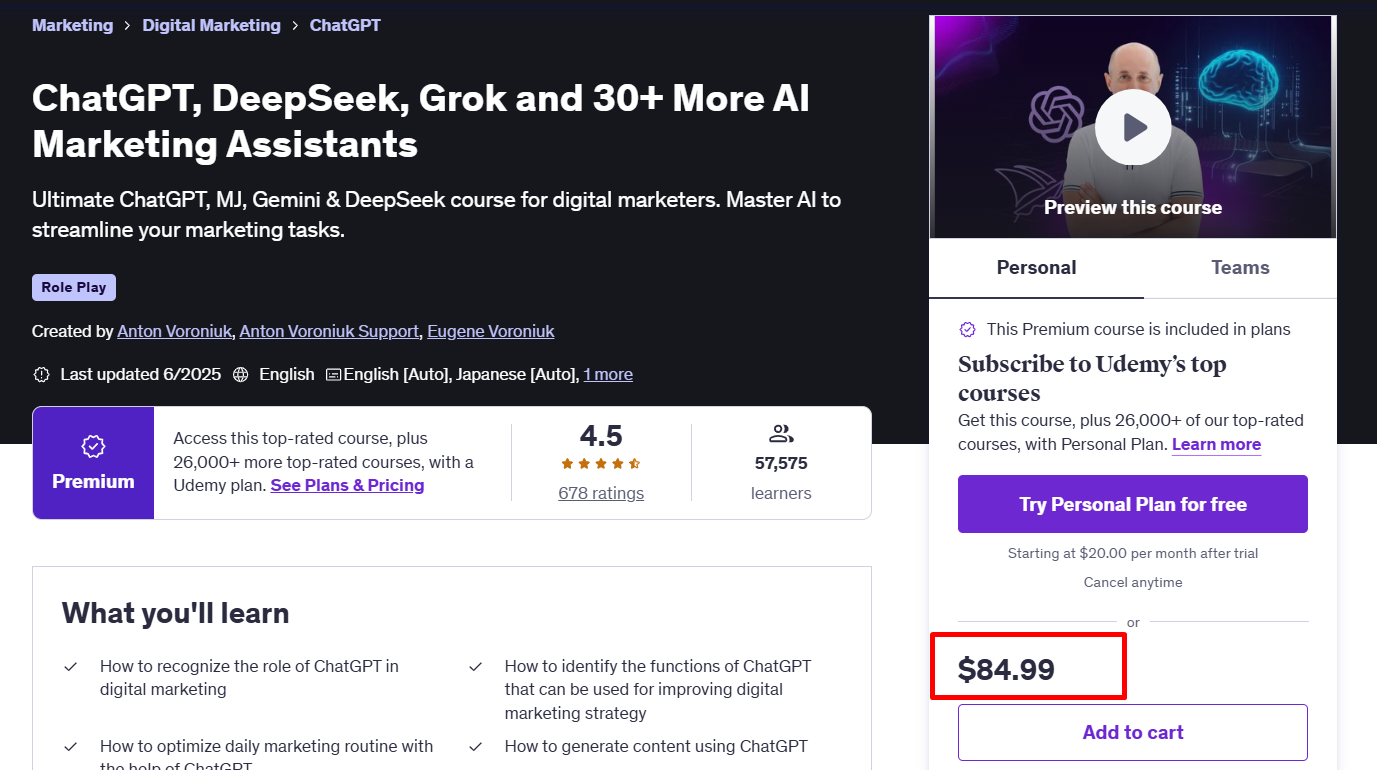
Paid Certificates
Many platforms offer basic course access for free but charge for certificates. Certificates help to build your credibility and mastery over the subject.
For example, paid certificates are one of the main revenue sources of Coursera.
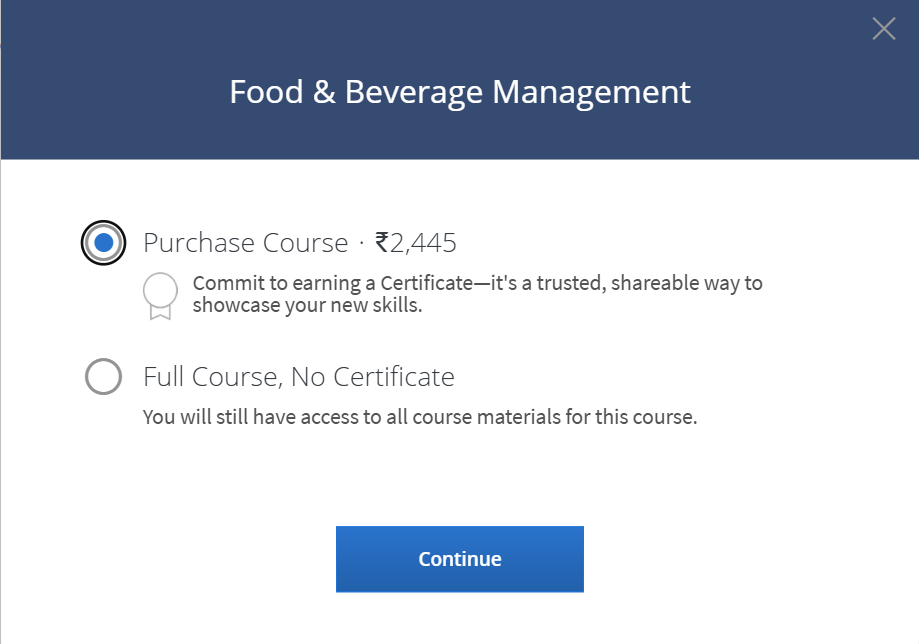
Subscription
Need recurring revenue for your e-learning platform? Subscriptions offer unlimited course access for a fixed monthly or yearly fee..
On the downside, you need to offer ongoing value to subscribers every month. Skillshare follows the subscription model. Learners can get unlimited access to thousands of courses. The monthly and yearly subscriptions are priced at $13.99/month and $167.88, respectively.
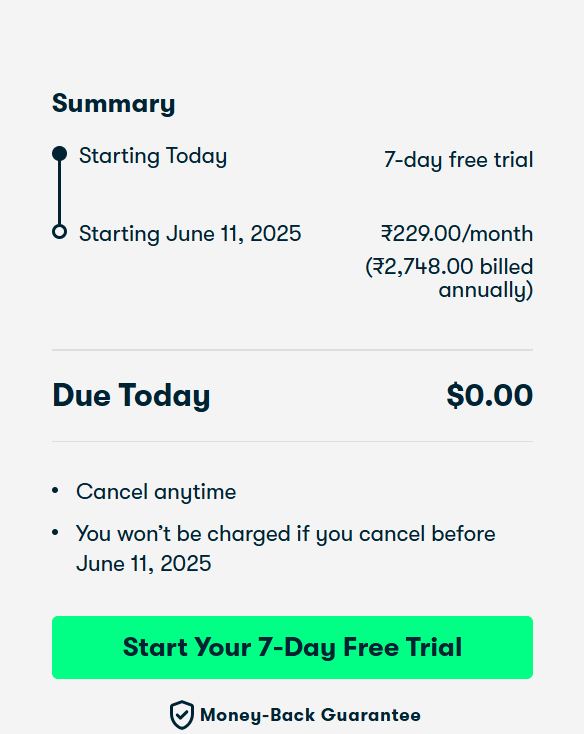
Premium Accounts
In this model, learners can access the basic platform features for free. Once they go premium, an ad-free experience or personalized learning paths are available.
For instance, Skillshare offers a premium membership. This includes unlimited course access, community support, offline access, and more.
Corporate Partnerships
Businesses are increasingly including online learning to train their workforce. Enterprise training solutions engage and motivate employees. Udemy for business and Coursera for business are examples of this model.

Step 4: Decide the Essential Features
If you’re building a full-fledged course platform like Udemy, you can’t afford to miss any key features!
We have features for three categories: student, instructor, and admin.
Key Features for Students
- Easy sign up
Create a simple login for students and instructors. Add multi-factor authentication like OTP to increase security. Users can login within seconds with social logins like Google and Facebook.
- Course Search & Discovery
With an effortless search tool, students can find the courses they are looking for. The auto-complete feature helps you find the courses in no time! Add filters like topic, price, course availability, price range, expertise and more.
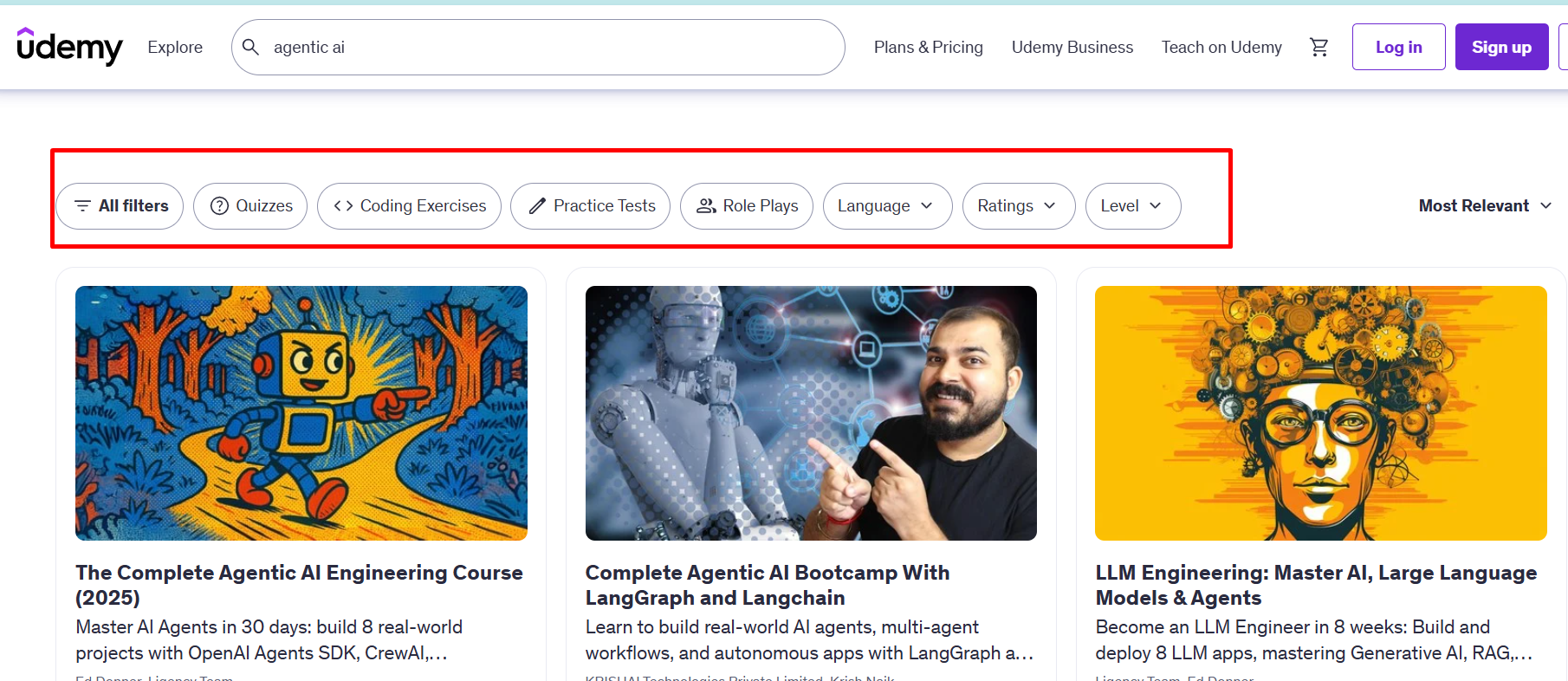
- Course enrollment
A smooth course enrollment offers a superior user experience. Offer a secure payment process through enrollment. Additionally, include options like certificates, EMI options, and audit only.
- Secure Payment Module
Integrate with reliable gateways like Stripe, and PayPal. Add diverse payment methods like credit cards, debit cards, and local gateways for convenience.
- Ratings & Review
Reviews are signposts to overcome the purchase dilemma. A 5-star rating system helps learners to rate courses based on their quality. Include a comment section below every course. Here, learners can add testimonials and share their experiences.
- Course Recommendations
Recommend courses based on student’s past purchases, course quality and relevance. Udemy has a course recommendation section for every user. It also takes into account the user’s browser history to suggest courses.

Key Features for Instructors
- Profile customization
A compelling creator profile pulls in more learners to purchase your courses. Typical fields include name, bio, languages known, and qualification.
- Course creation & management
One of the top priorities for creators is easy course creation. They should be able to outline course structure and add course materials like PDFs, videos, etc. Provide interactive tools like quizzes, assessments, etc.
- Communication
Communication tools help instructors to provide learners proper feedback. For example, a private chat helps to clear queries, answer questions, and more.
- Course transactions
Course creators can track the total course sales and earnings. This helps to identify the courses that work well and tweak others!
- Dashboard & Analytics
Allow creators to manage courses and payments from one dashboard. They can build a course, find the number of course enrollments and track earnings.
- Initiate payout request
Isn’t the clink of money irresistible and encouraging? Creators look for quick and timely payouts to stick long. Choose reliable payout methods like Paypal or Payoneer. You can choose a weekly or monthly payout schedule.
- Coupons manager
Instructors can create coupons for particular courses and give discounts. Bulk coupons include multiple codes for the same course.
Key Features for Admin
- Dashboard & Analytics
For a Udemy-like site, the dashboard must include overall revenue, total course enrollments, number of learners, and more.
- User management
An e-learning platform’s progress depends on its learner progress. Hence, it’s essential to maintain a user database. Evaluate learner progress, course purchases, and earnings per course. For something like Udemy Business, admin creates and manages user roles & groups.
- Instructor management
Instructors are the driving force of your course platform. Allow admin to create, manage, and instructor accounts. Store general information, courses created, ratings, and earnings.
- Course management
Admin oversees the course creation and management. That said, course creation, publishing, quality control, and course analytics are part of the process. Create strict platform guidelines and policies for quality control.
- Payment Module
Admin should be able to manage payments, payouts, and refunds. Admin can approve or reject payouts and refunds, as well as update the status.
- Category management
Your course platform is a repository for courses. Organizing your courses helps users easily find the courses they need. Create categories to filter courses and offer a better search experience. For example, “data science,” “yoga,” and “machine learning” are a few examples.
- Platform settings
A unique brand voice better resonates with your audience! This module helps the admin to customize the platform with tailored settings. This includes general logo, color, and themes. Or add third-party integrations like SMTP, CMS, payment gateway, or live streaming API.
- Commission management
If commissions are your primary revenue source, allow the admin to decide the commission percentage. Either create a standardized or instructor-specific commission rate.
Step 5: Pick the Right Solution to Build Your Udemy-like Website
Finally, it’s time to choose the right platform for your Udemy-like website. This is a key step in this “how to create a website like Udemy” guide. You don’t have to limit yourself to just building from scratch. There are a whole lot of development approaches to explore.
Choose your method based on cost, development time, and feature complexity.
Development approaches to build a website like Udemy are:
-
Udemy Clone Scripts
Udemy clone scripts help to launch your e-learning platform with all the essential features & functionalities within a few weeks. Your perfect escape from long development cycles and coding skills!
Pinlearn is a highly customizable white-label clone script with cutting-edge features to build your edTech business on the go! Once you buy the clone script, you can customize it the way you like! Whether it’s a local payment gateway or 1-on-1 bundles, you gain access to premium add-ons.
-
Website Builders + LMS Plugins
Alternatively, you can use WordPress (a popular website builder) with an LMS plugin. Learndash, LifterLMS, and TutorLMS are popular WordPress LMS plugins.
WordPress scores points for no-code development and quick setup. However, it’s limited in scalability and customization.
-
Using LMS+CMS
Open-source LMS like Moodle and edX have basic student management features. Integrate it with a popular CMS like Strapi, Contentful, Joomla, etc.
This is a quick approach with plug-in support. But, it’s less flexible in its UI/UX and expects some technical skills.
-
No-code / Low-code LMS
No-code or low-code LMS also enables you to build a website like Udemy. Teachable, Thinkific, and Kajabi are some no-code SAAS solutions. Bubble.io and Outsystems are popular low-code alternatives.
These solutions offer an easy and fast launch along with hosting & maintenance. But, the downsides are monthly fees and limited customization.
-
Custom-development
The last approach is building from scratch — quite a resource-intensive one. From the initial concept to UI design to the entire development, it demands full ownership.
Cost is another stumbling block here. The cost to develop a website like Udemy is $50,000 to $1,00,000. Well, this depends on the feature complexity, hourly rates, and level of customization. For a detailed Udemy cost breakdown, refer to our detailed analysis.
Step 6: Onboard Educators to Your Marketplace
Imagine your platform has the best UX and feature-set but lacks quality content. Learners might stick to your platform for long!
What’s the best way to create quality content?
Hire the best in business!
For instance, Masterclass nails this area well. After all, you can’t resist when Gordon Ramsay challenges your inner chef! Other notable instructors on the platform are Bob Iger, Chris Hadfield, and Alice Waters.
How to attract the best talent?
Make your offer irresistible. Provide creator-friendly features, attractive compensation & benefits.
Steps to streamline your onboarding process:
- Define your instructor requirements
Clearly define what kind of instructors you are looking for. Include desired expertise, subjects, qualifications and the revenue share you’ll offer.
- Create a recruitment page
Include the platform highlights, benefits, FAQs and application form on the page.
- Sign up & launch course
Next, instructors can create accounts with essential information. Once that’s done, they choose a topic, create their first course & submit it for approval. You, as a platform, can offer a support team, community & relevant resources to support their journey.
- Identity verification process
Include an identity verification process once to complete the account creation process. Udemy prompts its instructors to complete verification before launching their first course. They need to submit their location and identity documents.
- Vet instructors & review courses
The vetting process evaluates expertise, course content, audience, and teaching skills. For example, Udemy has a course checklist for approval.
- Tools & Community Support
Upskill your staff with micro-certifications, bootcamps and webinars. For instance, Udemy offers a set of tools & programs for its instructors. Marketplace insight to assess topic demand and test video to check video quality.

Step 7: Promote Your Udemy-Like Website
So, you have launched your marketplace with the best instructors!
Now, it’s time to anchor your online presence.
Because you can’t simply rest, expecting your audience to find your platform by themselves. Attracting high-value learners needs a strategic marketing plan. And, it sure demands your time and effort.
Before that, you need to define a unique business proposition for your website. And ensure you have detailed personas of your ideal audience. This helps to target the right audience and convey your marketing message better.
These powerful marketing strategies might help you spread the word:
-
Social Media
A killer social marketing strategy elevates your brand presence. First, identify which platforms are ideal for reaching out to your audience. For example, LinkedIn is great for professionals and corporate learners.
YouTube works for video tutorials and course reviews. While Instagram reels are perfect for sharing micro-lessons, tips or testimonials.
-
Email Marketing
Email marketing hasn’t lost its charm. Build an email list of potential learners and send them promotional emails. Create an active email campaign including course launches, seasonal offers, and discounts.
Udemy does this well!
For example, here’s a flash sale promotional mail by Udemy.

Create newsletters where users can look out for educational trends, news & events.
-
Partnerships & Collaborations
Want to add credibility to your courses? Partner with leading educational institutions, universities or companies. You could offer boot camps, master programs, or degrees with this partnership. Collaborate with SMEs to create a skill-based program.
For instance, edX collaborates with popular institutes including MIIT, Harvard University, Google, Cambridge University and more.
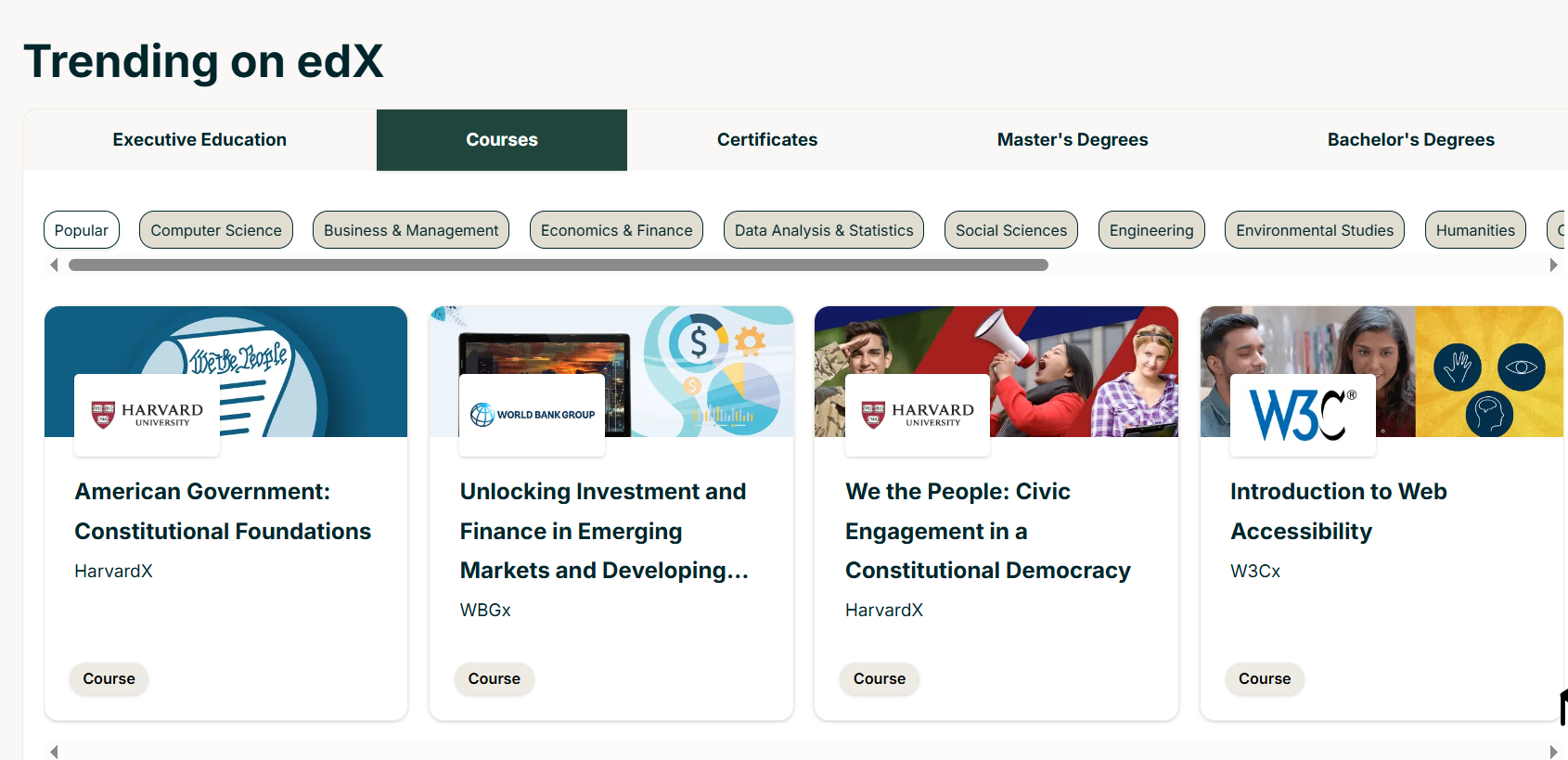
-
Online Advertising
Paid advertising helps to market your e-learning platform to a broader audience.
Google Ads and social media campaigns are two strategic places. If you’re targeting a social audience, Meta ads, LinkedIn ads, and YouTube ads are great to pitch your business.
Udemy runs paid campaigns on Facebook and Google Ads. It also runs seasonal ads and collaborates with Google, Amazon and Groupon to broaden its reach.

-
Coupons & Referral Program
Coupons & referral programs are attractive baits to attract learners.
Instructors can create coupons for a specific course or student. This creates a temporary discount or urgency for courses.
Udemy has both an active coupons & referral program. This is a win-win for instructors & students. Instructors can attract students and earn higher commissions.
-
Offer Free Courses
If you want to build your initial audience, offer free courses and make content accessible to all. Later, you can monetize from certifications, ad-free experience, or premium features.
Well, that’s our step-by-step guide on how to create a website like Udemy!
Wrapping Up
Udemy is still creating ripples in the e-learning space. It has amassed a staggering revenue year-on-year thanks to its robust business model. From commissions and subscriptions to affiliates, it has multiple revenue sources.
Building a website like Udemy is a profitable endeavor!
We have shared our expertise on how to create a website like Udemy. Building an e-learning giant like Udemy is possible with the right solution. Pinlearn is one of the finest solutions inspired by the e-learning giant itself! Plus, you don’t have to stop there! Gain a unique business edge with its premium features.
From creating and selling courses and monetization channels to dynamic dashboards, you can have it all! You don’t require any coding skills and an extensive budget.
And for the unversed, we simplify the development process for our less technical clients! Want to find if Pinlearn is the right fit for your business? Schedule a demo today and build your Udemy-like platform in no time!
FAQ-Related to How to Create a Website Like Udemy
1. How to make a site like Udemy?
Essential Steps to build a platform like Udemy:
- Decide a profitable niche
- Perform market research
- Choose a business model
- Determine the important platform features
- Choose the right technology
- Onboard educators to your platform
- Promote your Marketplace
- Scale your business & growth
2. What platform is Udemy built on?
Udemy is built on the following framework:
- Front-end – React.js
- Back-end – Python-Django
- Database – MySQL, Redis, PostgreSQL
3. What’s the development cost to create a website like Udemy?
The cost to make a Udemy-like website is $50,000 to $100,000, depending on the features. Other factors that affect the development cost are hourly rates, tech stack, and customizations.
4. How many months does it take to create a website like Udemy?
Building a Udemy-like website from scratch takes around 6 to 8 months. The time depends on the feature complexity, tech stack, and developmental approach.


